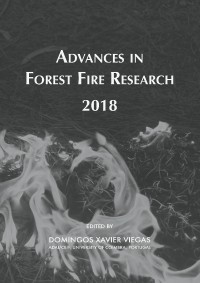Please use this identifier to cite or link to this item:
https://hdl.handle.net/10316.2/44634| Title: | Mean atmospheric flow pattern and forest fire risk on the Adriatic coast of Croatia | Authors: | Pelajić, Izidor Mokorić, Marija Mikec, Krunoslav Kozarić, Tomislav |
Keywords: | Adriatic;forest fire risk;severity rating;weather type | Issue Date: | 2018 | Publisher: | Imprensa da Universidade de Coimbra | Journal: | http://hdl.handle.net/10316.2/44517 | Abstract: | Forest fires are the most common natural disaster during the warm part of the year on the Adriatic coast of Croatia causing extensive damage and sometimes even an ecological catastrophe. It is therefore important to understand all weather and climate conditions leading to an increased risk of forest fire ignition and spread. In this paper the relationship between mean monthly atmospheric flow pattern (monthly weather type) and mean monthly forest fire risk (monthly severity rating) has been investigated. The analysis was done for the Adriatic coastal areas in the period from 1981 to 2015 during the fire season, between May and October. The results show that in the fire seasons of the observed 35-year period the most common monthly weather types were non-gradient field, northwesterly flow and westerly flow (20%, 16% and 20% of the cases, respectively). The most frequent monthly severity rating was “high” with 44% of all cases, followed by “moderate”. On the other hand, the highest monthly severity rating (“very high”) was present in just 5% of cases. Dry monthly weather types (ridge and front side of the ridge, 8% and 7% of the cases, respectively) showed stronger relationship with higher monthly severity ratings, while wet types (southwesterly flow and trough) appeared very rare in case of higher monthly severity ratings. The aforementioned most common monthly weather types, denoted as mixed types, were associated with “moderate” to “high” monthly severity ratings in less than 30% of the cases, making those types difficult to connect with monthly severity ratings. The “Consecutive Month Diagrams” (CMDs) concept was introduced in order to inspect the time correlations between monthly weather types and monthly severity ratings. In general, dry weather types supported fast transition to weather conditions favoring higher severity ratings, almost regardless of the previous month conditions, with two exceptions noted. If weather type time series were expressed as “cumulative fractions in total”, the trends and ratios between weather types could be easily observed in the 35-year period. Since 1990s differences between fractions of dry and wet weather types have been increasing, suggesting more months with atmospheric flow patterns connected with higher forest fire risk. The results and concepts introduced in this work, as well as further analysis of atmospheric flow patterns and forest fire risk, can help to improve the short-term and especially long-term forecasts of forest fire risk. | URI: | https://hdl.handle.net/10316.2/44634 | ISBN: | 978-989-26-16-506 (PDF) | DOI: | 10.14195/978-989-26-16-506_117 | Rights: | open access |
| Appears in Collections: | Advances in forest fire research 2018 |
Files in This Item:
| File | Description | Size | Format | |
|---|---|---|---|---|
| mean_atmospheric_flow_pattern.pdf | 847.28 kB | Adobe PDF |  |
Items in DSpace are protected by copyright, with all rights reserved, unless otherwise indicated.
